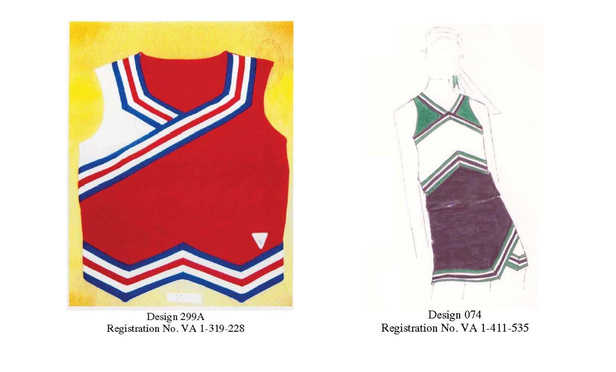Designers of haute couture fashion have long been troubled by the inability to protect their designs, and the speeds at which designs can be copied now have added to their frustrations. The root of the problem for many years was the U.S. copyright law, which was considered to prohibit enforcement of a copyright in wearable fashions. The Copyright Act, 17 U. S. C. Section 101 et seq., limited copyright protection for “pictorial, graphic, or sculptural features” of “a useful article” to features that “can be identified separately from, and are capable of existing independently of, the utilitarian aspects of the article.” This generally prohibited fashion designers from copyrighting the entire designs of an article of clothing because clothing is understood to be a useful article and the design was embedded in or was not “capable of existing independently of, the utilitarian aspects of the article.” Some fashion designers, such as Crocs Inc., successfully overcame this prohibition on designs that are incorporated in an article of clothing by seeking design patent protection. However, other designers have found that they cannot meet the requirements for design patent protection and continued to seek copyright protection. The recent Supreme Court decision in Star Athletica v. Varsity Brands, No. 15—866, slip opinion, (March 22), may offer designers expanded copyright relief by providing a broader definition of features that “can be identified separately from, and are capable of existing independently of, the utilitarian aspects of the article.” Star Athletica may lead to a shift in the landscape for fashion designers protecting their intellectual property, if they establish the separate nature of what is alleged to be protected.
In Star Athletica, the Supreme Court expanded the scope of copyright protection afforded to fashion designs by expanding on the concept of what is capable of existing independently of the utilitarian aspects of the article. Varsity originally sued Star Athletica for infringing five registered copyrights on two-dimensional designs, displayed on the surface of cheerleader uniforms, that consisted of the various “combinations, positionings and arrangements of elements” that include “chevrons … lines, curves, stripes, angles, diagonals, inverted [chevrons], coloring and shapes.” Star Athletica responded by alleging that the designs were not protectable because they did not qualify as protectable pictorial, graphic or sculptural works, i.e., they were inseparable. The district court agreed with Star Athletica and issued a summary judgment in Star Athletica’s favor, (Star Athletica v. Varsity Brands (WD Tenn., March 1, 2014)). The U.S. Court of Appeals for the Sixth Circuit reversed the district court’s decision, and found that the graphic designs of the uniforms were separately identifiable because the designs and “a blank cheerleading uniform can appear ‘side by side’—one as a graphic design and one as a cheerleading uniform.” (Star Athletica v. Varsity Brands, 799 F. 3d 468, 491 (2015)). The Sixth Circuit concluded the designs were “capable of existing independently” because they can be incorporated onto the surface of different types of garments, or hung on the wall as framed art.



